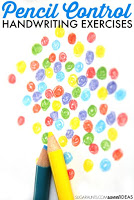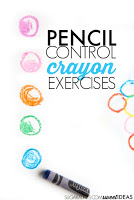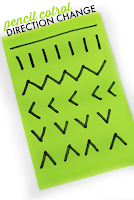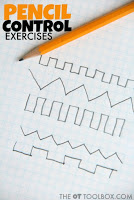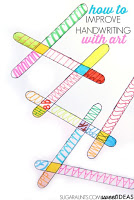When we write in cursive, the pencil moves across the page in smooth and fluid motions from letter to letter and at an even pace. But what happens when the pencil is not moving smoothly. What happens if the pencil strokes are scratchy or letters vary in width. What happens when the pencil stops mid-letter or there is stopping and starting within the words. This cursive writing rhythm allows us to move from these scratchy, bumpy, and uneven letters to fluid and functional movements. This is cursive writing rhythm.
This cursive handwriting post is part of the 31 day series on cursive handwriting that is occurring here at The OT Toolbox.
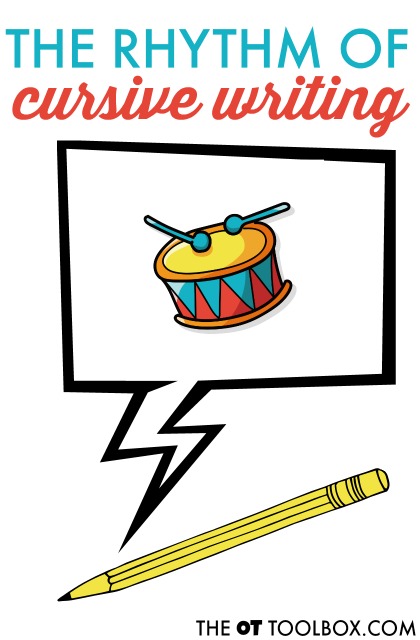
Cursive Writing Rhythm
The rhythm of cursive handwriting doesn’t happen automatically or overnight. It’s an ability that occurs with practice and with maturity. A student who is just learning cursive letters won’t have rhythm in their written work, but it is a goal that can be achieved with practice. Rhythm and fluid cursive writing occurs over time.
Formation of individual letters is just one part of cursive writing. Another piece is the rhythm of pencil strokes.
Using a pattern of consistent pencil strokes makes letters recognizable. Without that pattern and rhythm, writing can turn into scribbling very quickly.
The rhythm that it takes for cursive writing is what makes letters legible and helps with overall appearance. A person may be able to read their own “chicken scratch” cursive writing but another person is not used to that technique will not be able to read it at all.
What is the difference in these two extremes? It’s the rhythm of the pencil with as it as you write in cursive.
Rhythm can change when people write in cursive. When you’re writing very quickly, pencil strokes look different than when you take your time for a letter or note. The rhythm of a doctor signature on a prescription looks quite different then probably a signature on a thank you note to a grandparent.
People in general have different rhythm when they write. This is what gives some individuals a forward slant and others a backwards slant. Some writers use a loopy cursive font and others still, a scratchy style of writing.

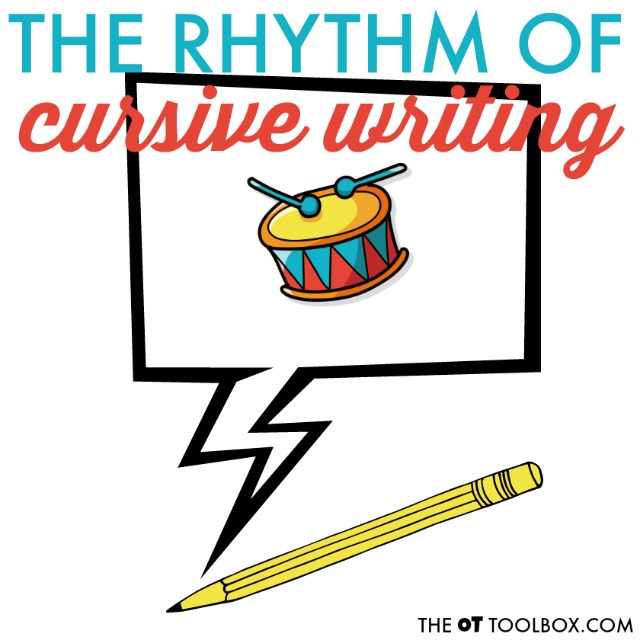
How to improve cursive writing rhythm
How can you work on rhythm of cursive writing?
It’s easy with simple exercises of a series of lines and sweeps. Working on small letters and tall letters in a pattern of three letters across the page can help to establish a pattern of pencil movement.
Try combining small lines with big lines.
Try combining the curves of lowercase “t” and “p” in a series.
Try joining together letters like lowercase “t” and “a” to mix pencil stroke movements. These different exercises teach you the movement pattern of arches including the starting point, stopping points, and retrace.
Activities to improve rhythm and fluidity in cursive writing
Exercises with tracing worksheets can help with pencil control and fluidity when in cursive writing. However there is an natural movement that each individual uses in their own motor plan to form curves and changes in direction.
Ask kids to make their own scribble on a piece of paper. Then allow them to use a highlighter or colored pencil or marker to trace over there scribble. This natural tracing over scribbles that are self drawn, is more likely to match motor plans as it’s natural for this individual.
Try completing the activities described above to help with rhythm of cursive writing.
Here are a few more activities that can help with pencil control and motor planning in handwriting: 


